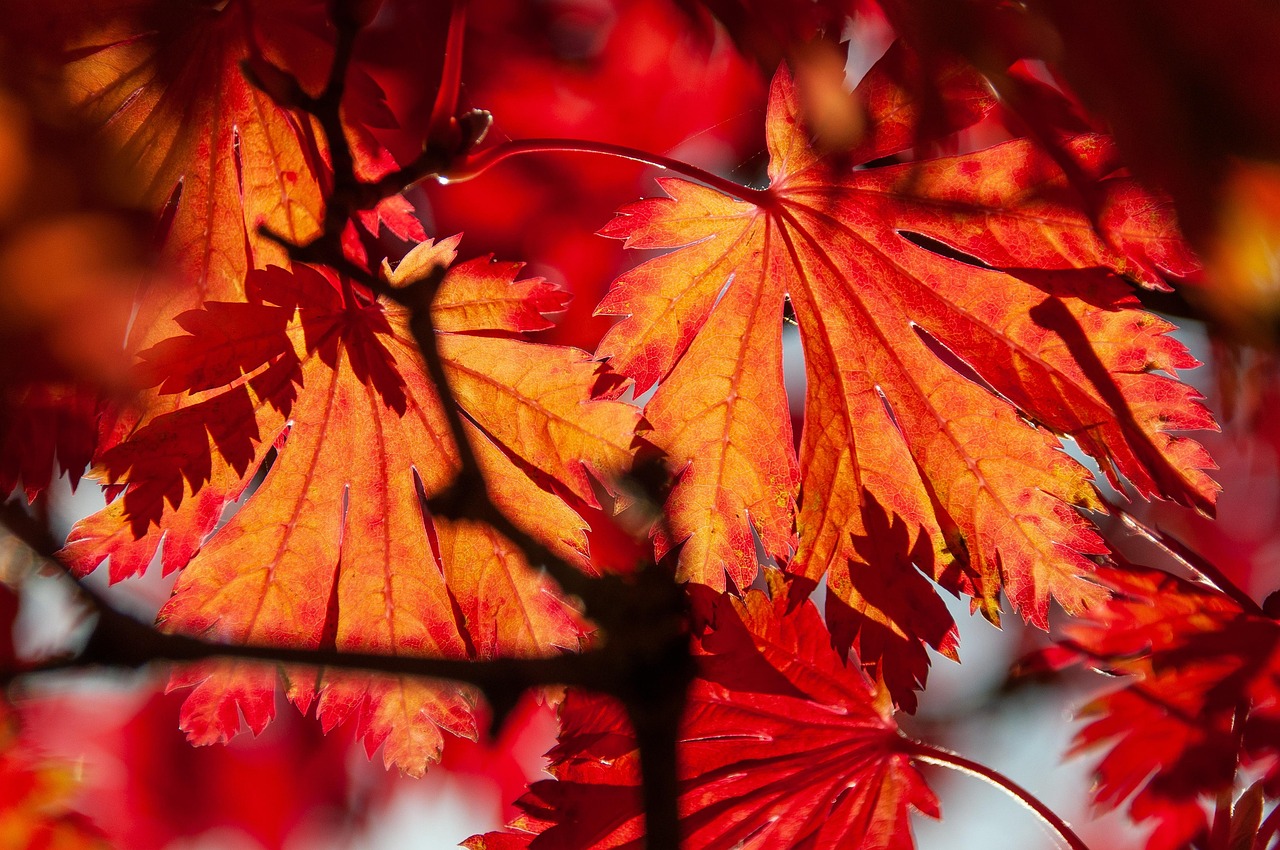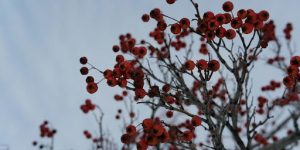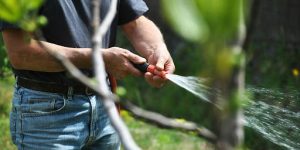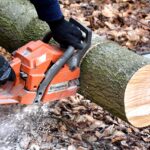When to Trim a Red Maple Tree for Healthy Growth

When I first got my red maple, I thought it would be like any other tree on my property. Turns out, these trees are a bit particular, especially when it comes to trimming. They grow fast, and if you don’t keep an eye on them, branches can start getting too close to the house or even power lines. It’s not just about looks; it’s about keeping things safe and the tree healthy. So, I’ve been doing some digging to figure out the best times to trim a red maple tree, and it’s more important than I thought.
Key Takeaways
- The best time to trim a red maple tree for major work is late winter, from February to March, before the buds start to swell.
- A secondary, less ideal time for trimming is late summer, between July and August, after the leaves have fully developed and hardened.
- Avoid pruning in early spring when sap flow is high, as this can cause excessive ‘bleeding’ and hinder wound healing.
- Lightly trim small, dead, or misplaced branches anytime, but extensive pruning requires careful timing to protect the tree’s health.
- Proper pruning techniques, like making clean cuts outside the branch collar, are important for quick healing, regardless of the season.
Red Maple Tree Trimming for Sustainable Growth
When it comes to keeping your red maple tree looking its best and growing strong, knowing when to trim is pretty important. I’ve found that a little bit of pruning at the right time can make a big difference. It’s not just about making the tree look neat, though that’s part of it. Proper trimming helps the tree stay healthy and can prevent problems down the road. Think of it like giving your tree a haircut at the best possible moment so it can recover well. This red maple tree pruning guide will help you figure out the best times to get out there with your tools. You’ll want to keep an eye out for signs that red maple needs trimming, like dead branches or ones that are growing into each other. It’s a bit of an art, but once you get the hang of it, it’s quite rewarding.
- Maintaining tree shape and structure
- Removing dead or damaged branches
- Improving air circulation within the canopy
It’s easy to think that any time is a good time to trim a tree, but with red maples, timing does matter. Getting it wrong can lead to a lot of sap weeping, which isn’t great for the tree’s recovery.
Understanding the tree’s natural cycles is key to successful pruning. For instance, knowing when the sap is flowing heavily versus when it’s at its lowest can save you a lot of mess and help the tree heal faster. I’ve learned that being observant about your tree’s condition is half the battle. You can find more general tree care advice on growing healthy trees.
Why Timing Matters
When I first started getting into tree care, I was a bit confused about when to trim my red maple. It seemed like everyone had a different opinion. But after digging into it a bit, I realized that the timing does make a difference, especially with red maples. It all comes down to how the tree’s sap is flowing.
Sap Flow and Its Impact
Red maples are famous for their sap, the stuff that eventually becomes maple syrup. This sap is like the tree’s lifeblood, moving nutrients around. The real issue for us tree trimmers is that this sap flow is strongest in late winter and early spring. If you cut during this time, the tree will ‘bleed’ sap. While it might look alarming, it’s a sign the tree is healthy and getting ready to bud. However, excessive sap can make it harder for the tree to close up those pruning cuts and recover properly.
When Sap Flow is Lowest
So, if sap is the problem during spring, when is it not a problem? Well, by the time fall rolls around, the tree has already moved most of its nutrients into the leaves, which then fall off. This means the sap flow is at its lowest point. This is a much better time for the tree to handle pruning wounds without that heavy sap flow interfering with healing.
The Risk of ‘Bleeding’
You might see a lot of sap dripping from a pruned maple, and while it’s not usually harmful to a mature tree, it can be a bit messy. More importantly, if you’re dealing with a younger, smaller tree, that sap loss can stress it out and hinder its growth. It’s like taking too much blood from someone who is already a bit weak.
Understanding the Tree’s Needs
It’s not just about avoiding the mess or the sap. Pruning at the wrong time can also make the tree more vulnerable to diseases and pests. The tree needs to be in a good state to heal its wounds, and that state is usually when it’s not actively pushing a lot of sap around. Thinking about the tree’s natural cycles is key to keeping it healthy and strong for years to come. If you’re unsure about your specific tree, it’s always a good idea to check with a local arborist or look up red maple tree care advice.
Best Time to Trim

When it comes to keeping your red maple looking its best and growing strong, timing your pruning is pretty important. For me, the sweet spot is late winter, usually sometime between February and March. This is right before the tree starts waking up and pushing out new buds.
Why this time? Well, the sap flow in red maples is much lower during these colder months. If you prune when the sap is running, like in early spring, the tree can “bleed” a lot. While this sap itself doesn’t usually harm a healthy, mature tree, excessive bleeding can make it harder for the cuts to heal properly. It can also make a mess, dripping sap everywhere. Waiting until after the sap flow has subsided is a good idea for cleaner cuts and less stress on the tree. This period also allows me to see the tree’s structure without leaves getting in the way, making it easier to identify branches that need to be removed. It’s a good time to tackle any dead, damaged, or crossing branches that might have become apparent over the winter. Plus, pruning before new growth starts means the tree can use its energy to heal those cuts and then focus on producing healthy new leaves and branches.
Identifying Branches for Removal
- Dead or Diseased Wood: Look for branches that are brittle, discolored, or lack any signs of life. These should always be the first to go.
- Crossing or Rubbing Branches: Branches that grow into each other can cause wounds, creating entry points for disease. I usually remove the weaker or poorly positioned one.
- Water Sprouts and Suckers: These are fast-growing, often vertical shoots that can detract from the tree’s shape and sap resources. Removing them helps direct energy to more desirable growth.
Benefits of Late Winter Pruning
- Reduced Sap Bleeding: As mentioned, sap flow is minimal, leading to cleaner cuts.
- Clear Visibility: Without leaves, the tree’s structure is fully visible, aiding in precise pruning decisions.
- Wound Healing: The tree has the entire growing season ahead to heal pruning cuts before the next winter.
Pruning during this window helps the tree recover quickly and prepares it for a vigorous growing season. It’s a proactive step for long-term tree health.
For those looking to establish a good structure from the start, considering the best times for planting a red maple is also key.
Alternative Window
Late Summer Pruning: A Secondary Option
While late winter is my preferred time to trim a red maple, I’ve found that late summer, specifically between July and August, can also be a suitable window. This timing works well because the tree’s leaves have hardened off by then. This means the sap flow isn’t as vigorous as it is in early spring, reducing the chance of excessive “bleeding” from the cuts. It’s a good time for maintenance pruning, like removing dead or damaged branches that might have become apparent during the growing season.
I like to use this period for lighter work. It’s not the ideal time for major structural changes, but it’s perfect for tidying up the tree. Think of it as a mid-year check-up for your red maple. It helps keep the tree looking good and can prevent small issues from becoming bigger problems down the line. Plus, with the leaves fully developed, I can get a clearer picture of the tree’s overall shape and health, making it easier to decide which branches need attention. It’s important to remember that this is an alternative, not a replacement, for the ideal late winter pruning. If you’re unsure about identifying red maple vs. sugar maple differences, it’s always best to consult with a professional.
- Assess overall tree health: The full canopy allows for a better view of any issues.
- Remove dead or diseased branches: This prevents potential spread to healthy parts of the tree.
- Light thinning: Improve air circulation within the canopy.
When pruning in late summer, focus on making clean cuts just outside the branch collar. This helps the tree heal properly and reduces the risk of disease entering the wound. Avoid removing more than 25% of the tree’s live growth in any single pruning session.
Avoid Trimming in Spring Bud-Break and Early Fall
Spring Sap Flow and Stress
I’ve learned that trying to trim a red maple during the spring bud-break period, roughly from April to May, is generally not a good idea. This is when the tree is actively pushing sap upwards to fuel new leaf growth. If I were to make cuts during this time, the tree would likely
Sap Flow in Red Maples
When I first started looking into trimming my red maple, the thing that kept coming up was the sap. It’s like, everyone talks about how much these trees ‘bleed.’ It’s true, they do produce a lot of sap, especially in late winter and early spring. This is when the tree is pushing nutrients up to the buds to get ready for new growth. If you cut a branch during this time, you’ll see a lot of clear liquid oozing out. It can make a mess, and it might look like the tree is really suffering, but honestly, it’s usually a sign that the tree is healthy and ready to grow. The real issue isn’t the sap itself, but how it affects the tree’s ability to heal. Too much sap flow can make it harder for the tree to seal up those pruning cuts. This leaves the wounds open longer, which can invite diseases or pests. That’s why timing is so important. We want to prune when the sap flow is at its lowest, so the tree can recover quickly.
Understanding the Sap Flow Cycle
It’s helpful to think about the red maple’s sap flow like a yearly cycle:
- Late Winter/Early Spring (February-March): This is peak sap flow. The tree is actively moving sap upwards to prepare for budding. Pruning now will result in significant ‘bleeding.’
- Late Spring/Summer (May-August): Sap flow slows down considerably as the leaves harden off. The tree is focused on photosynthesis and growth. This is a much better time for pruning, as the sap won’t be under as much pressure.
- Fall (September-November): Sap flow is very low. Nutrients have been stored in the leaves, which are now falling. This is also a good time for pruning, as the tree is entering dormancy.
Sap and Wound Recovery
When you cut a red maple, the tree tries to seal the wound by forming callus tissue around the cut edge. This process is much more effective when sap flow is minimal. If you prune during high sap flow, the sap can wash away the initial callus formation, delaying the healing process.
While the ‘bleeding’ might look alarming, it’s not typically harmful to a mature red maple. However, it can hinder the tree’s ability to close wounds efficiently, making it more vulnerable to problems.
So, while you might see sap, don’t panic. Just remember that pruning at the right time, when sap flow is low, is key to helping your red maple recover and stay healthy. This is why understanding the sap flow in red maples is so important for successful pruning.
Light Maintenance vs. Structural Pruning
When I’m looking at my red maple, I often think about what kind of trimming it needs. It’s not all the same, you know? There’s the little stuff, like tidying up a branch that’s sticking out funny, and then there’s the bigger work, like shaping the whole tree or removing a large limb. These two types of jobs have different timing, and it’s good to know which is which.
Light Maintenance Trimming
This is the kind of work you can often do without too much worry about the season. If I see a small, dead twig or a branch that’s just growing in a weird direction, I can usually snip it off. It’s like giving the tree a quick tidy-up. This type of minor pruning helps keep the tree looking neat and can prevent small issues from becoming bigger ones. For instance, removing a twig that’s rubbing against another branch stops potential damage before it starts. I can usually do this any time of year, but I still try to avoid the really active sap flow times, just to be safe.
Structural Pruning
This is the more involved work. We’re talking about shaping the tree, especially when it’s young, or removing larger branches that are crossing, rubbing, or posing a hazard. This is where timing matters. If I need to make significant cuts, I want to do it when the tree is less likely to
Pruning Young Red Maples
When I’m working with younger red maple trees, my main goal is to help them develop a strong structure right from the start. This isn’t about just hacking away; it’s about guiding their growth so they’ll be sturdy and healthy for years to come. The best time to prune red maple saplings for this purpose is generally in late spring or early summer, after the leaves have fully emerged. This timing is important because the tree is less likely to ‘bleed’ sap excessively, which can happen if you prune during the maple tree’s dormant pruning season when sap is under pressure.
Here’s what I focus on when pruning young maples:
- Establish a strong central leader: I look for one dominant, upright stem and remove any competing leaders. This ensures the tree grows tall and straight.
- Develop scaffold branches: I select well-spaced branches that grow outwards from the trunk at good angles. These will form the main structure of the canopy.
- Remove crossing or rubbing branches: Branches that are growing into each other can cause wounds and disease entry points later on.
- Correct poor angles: Branches that attach to the trunk at narrow angles are weaker and more prone to splitting as the tree grows.
It’s important not to overdo it with young trees. I try to remove only what’s necessary to shape the tree, usually no more than 25% of the live growth in a single season. This allows the tree to focus its energy on growing and healing.
For young red maples, the focus is on building a solid framework. This means selecting strong branches and removing those that might cause problems down the line, like weak attachments or branches that grow inward.
Pruning at the right time, like late spring after the leaves have hardened, helps the tree recover quickly. It’s all about setting them up for success. If you’re unsure about how to shape your young red maple, it’s always a good idea to consult with a professional or look up resources on proper maple tree care.
Practical Seasonal Calendar
Knowing when to grab your pruning shears for your red maple is pretty important if you want it to stay healthy and look good. It’s not just about hacking off branches whenever they get in the way; timing does make a difference for the tree’s well-being. I’ve put together a quick rundown to help you remember the best times.
Late Winter (February–March)
This is generally my go-to period for any significant trimming. The tree is still dormant, meaning it’s not actively pushing out sap like it will in spring. This makes for cleaner cuts and less of that sticky mess that can drip everywhere. Plus, without leaves, I can see the tree’s structure and figure out which branches need to go. It’s a good time to address any structural issues or remove larger dead limbs. Remember to check out resources on proper pruning techniques before you start.
Late Summer (July–August)
If I miss the late winter window or need to do some light tidying up, late summer is my next best bet. The tree has already put out its leaves, and the sap flow isn’t as intense as it is in early spring. This is a good time for thinning out the canopy a bit or removing any branches that are growing awkwardly. It’s not ideal for major structural work, but it’s perfect for maintenance. Just be careful not to remove too much foliage, as the tree still needs its leaves to make food.
What to Avoid
I’ve learned the hard way that spring, right when the buds are swelling and about to burst, is a bad time. The tree is pushing sap then, and pruning can lead to excessive bleeding. This can stress the tree and make it harder for those cuts to heal. Also, early fall isn’t great. The tree is preparing for winter, and new cuts can be more susceptible to damage or disease before the cold sets in. It’s best to let the tree settle into dormancy without the added stress of pruning.
Seasonal Snapshot
| Season | Best Time for Trimming? |
Notes |
| Late Winter | Yes | Dormant, less sap, good visibility for structural work. |
| Spring | No | High sap flow, potential for stress, and poor wound healing. |
| Late Summer | Yes | Light trimming, thinning, after leaves harden. |
| Early Fall | No | Increased risk of disease and winter damage to new cuts. |
When you’re trimming, always aim to make clean cuts just outside the branch collar. This helps the tree heal properly and reduces the chance of problems down the road. It’s a small detail, but it makes a big difference for the tree’s long-term health.
Tools & Techniques for Clean Cuts and Rapid Healing
When it comes to trimming your red maple, the tools you use and how you use them make a difference in how well the tree heals. Using the right equipment means cleaner cuts, which in turn helps the tree recover faster and reduces the chance of disease getting in. It’s not just about hacking away; it’s about being precise.
Essential Tools for Pruning
- Hand Pruners (Secateurs): These are your go-to for small branches, typically up to about 3/4 inch in diameter. Bypass pruners are best, as they make a clean cut like scissors, rather than crushing the branch.
- Lopping Shears: For branches a bit thicker, from 3/4 inch up to 1.5 inches, loppers are the way to go. They have longer handles, giving you more leverage for a cleaner cut.
- Pruning Saw: For anything larger than 1.5 inches, you’ll need a pruning saw. Look for one with sharp, set teeth designed for cutting wood. A curved blade can help get into tight spots.
- Pole Saw: This is a saw on a long pole, useful for reaching higher branches without needing a ladder. It’s great for removing deadwood or thinning out the canopy from the ground.
Proper Cutting Techniques
Making the correct cut is paramount for the tree’s health. You want to cut just outside the branch collar, which is that slightly swollen area where the branch meets the trunk or a larger limb. Avoid cutting flush with the trunk, as this can damage the collar and slow healing. Also, don’t leave a stub, as this can rot and invite pests.
For larger branches, it’s wise to use the three-cut method to prevent the bark from tearing down the trunk:
- Undercut: About 6 to 12 inches out from the branch collar, cut the underside of the branch, going about one-third of the way through.
- Top Cut: A few inches further out from the undercut, cut down from the top until the branch breaks off. This removes the weight of the branch.
- Final Cut: Now, make the final cut just outside the branch collar to remove the remaining stub. This cut should be clean and smooth.
Wound Care and Prevention
While it used to be common practice to seal pruning cuts, current thinking suggests that most trees, including red maples, heal best when left to their own devices. The natural bark callus will grow over the wound. However, if you’re pruning to remove diseased branches, it’s a good idea to disinfect your tools between cuts. A simple solution of 10% bleach or rubbing alcohol works well for this, helping to prevent the spread of any potential diseases.
It’s also important to remember that you shouldn’t remove more than 25% of the tree’s live growth in a single season. Over-pruning can stress the tree, making it more vulnerable. If you’re unsure about a cut or dealing with a large branch, it’s always best to consult with a professional arborist.
Post-Pruning Care

After I finish trimming my red maple, I always make sure to give it a little extra attention. It’s not really about slathering on some special goo, but more about letting the tree do its thing.
Monitoring for Sap Flow
Sometimes, especially if I’ve pruned in late winter, I might see a bit of sap weeping from the cuts. It looks a bit like the tree is crying, but honestly, it’s usually not a big deal. This orange discharge, which can happen after spring pruning, is often just sap mixed with some fungus or bacteria from the outside. It typically doesn’t hurt the tree in the long run. I just keep an eye on it to make sure it stops after a day or two. If it looks really unusual or persists, I might look into it further, but most of the time, it’s normal. You can read more about this phenomenon on pages discussing sap discharge.
Wound Care and Observation
I don’t typically use wound dressings on my maple. The general advice I’ve come across is that these dressings can sometimes trap moisture and hinder the tree’s natural healing process. The tree is pretty good at sealing its wounds, especially if the cuts are clean. My main job is just to make sure the cuts are clean and that I haven’t removed too much of the tree at once. I’ll check back on the tree a few weeks later, just to see how the cuts are looking. Are they starting to callus over? Is there any sign of rot or disease setting in? It’s mostly about observation at this stage.
- Check cuts for signs of drying and sealing.
- Look for any new, unwanted sprouts near the pruned areas.
- Ensure no new deadwood has appeared on the branches I left.
It’s important to remember that a healthy tree will heal itself. My role is to help it by making good pruning decisions and then stepping back to let nature take its course.
Common Mistakes to Avoid When Pruning Red Maples
When I first started getting into tree care, I made a few blunders with my red maple. It’s easy to get it wrong if you’re not careful. One of the biggest mistakes I see people make is pruning at the wrong time of year. If you cut into a maple during late winter or early spring, you’ll notice a lot of sap weeping from the cuts. While this doesn’t necessarily harm a mature tree, it can be messy and, more importantly, it can stress younger trees. The sap flow is the tree’s way of moving nutrients to prepare for new growth, and excessive bleeding can hinder wound closure.
Another common pitfall is over-pruning. It’s tempting to want to shape the tree dramatically, but you should never remove more than 25% of the tree’s live growth in a single season. Taking off too much at once can shock the tree and make it vulnerable to pests and diseases. I learned this the hard way; my poor maple looked quite sad after I got a bit too enthusiastic with my pruning shears.
Here are some other common errors I’ve learned to avoid:
- Leaving stubs: When you cut a branch, make sure to cut it back properly, close to the branch collar or a lateral branch. Leaving stubs prevents the wound from healing efficiently and can invite decay.
- Using dull tools: Dull saws or pruners tear the wood rather than making a clean cut. This creates a ragged wound that takes longer to heal and is more susceptible to disease. Always keep your tools sharp.
- Topping the tree: This is a drastic measure where large branches are cut back to a single stub. It looks terrible and severely damages the tree’s structure, leading to weak, fast-growing sprouts.
It’s also important to remember that not all pruning is the same. Light maintenance, like removing dead twigs, can often be done at various times. However, significant structural pruning or removing large branches should be reserved for the appropriate seasons to minimize stress on the tree. Getting the timing right is key to helping your red maple thrive.
Finally, I often see people neglecting post-pruning care. After making your cuts, especially larger ones, it’s a good idea to monitor the wounds. While you don’t need to apply wound sealant (it can trap moisture and hinder healing), keeping an eye out for any signs of disease or insect activity around the cuts is wise. Proper pruning is a vital part of maintaining the health and structure of your red maple, and avoiding these common mistakes will help ensure it grows strong and beautiful for years to come. For more on how to prune maple trees, you can check out this guide on pruning maple trees.
Best Practices for Healthy Red Maple Growth

When it comes to keeping your red maple looking its best and growing strong, timing your pruning is really important. I’ve learned that doing it at the right time of year helps the tree heal faster and avoids a lot of messy sap.
Key Takeaways for Red Maple Pruning
- The best time to trim is late winter, usually February to March, right before the buds start to swell. This is when the sap flow is at its lowest, meaning less mess and better wound closure for the tree.
- A secondary, but still good, window for trimming is late summer, around July to August, after the leaves have fully developed and hardened.
- You should try to avoid pruning in the spring when the sap is running heavily, and also in early fall before the tree has had a chance to prepare for winter.
Understanding Sap Flow
Red maples are known for their sap, which is great for syrup but can be a nuisance when pruning. If you see sap, it’s a sign your tree is healthy, but too much can stop wounds from closing. That’s why picking those low-sap periods is so important for how to care for red maple trees.
What to Trim and When
- For light maintenance, like removing small dead branches or ones that are growing awkwardly, you can often do this any time of year. Just use clean tools for a good cut.
- For structural pruning, especially on younger trees to guide their growth, stick to the late winter or late summer windows. This helps build a strong framework without stressing the tree.
- When pruning, always make cuts just outside the branch collar. This helps the tree seal the wound more effectively. Remember, red maples don’t like having large branches removed, so stick to branches a few inches in diameter at most.
Proper pruning isn’t just about making the tree look good; it’s a vital part of its overall health and longevity. By understanding the tree’s natural cycles, especially its sap flow, I can make sure my red maple thrives.
Taking care of your red maple involves more than just pruning. Making sure it has the right light, well-drained soil, and consistent watering are all part of how to care for red maple trees. Paying attention to these details will help your tree stay healthy and beautiful for years to come.
Want your red maple tree to thrive? Following simple care steps can make a big difference. Learn the best ways to keep your tree healthy and strong. For more detailed advice and to get expert help with your trees, visit our website today!
Frequently Asked Questions
When is the ideal time for me to trim my red maple tree?
I find that the best time to trim my red maple is in late winter, usually around February or March, just before the tree starts to wake up and its buds begin to swell. This timing helps me avoid the heavy sap flow that can happen if I trim too early in spring. It also lets the tree heal before the heat of summer arrives.
Are there other good times to trim my red maple besides late winter?
While late winter is my preferred time, I’ve learned that late summer, typically July or August, can also be a good period. I make sure to trim after the leaves have fully developed and hardened. This is another time when the sap flow is much lower, which means less mess and better healing for the tree.
When should I avoid trimming my red maple?
I generally avoid trimming my red maple during the spring when the buds are breaking and the leaves are just starting to appear. This is when the tree is actively pushing sap upwards, and pruning at this time can lead to a lot of sap bleeding, which can be messy and potentially stress the tree. I also steer clear of early fall because the tree is preparing for winter, and new cuts might not heal properly before the cold weather sets in.
Why does my red maple ‘bleed’ so much sap when I trim it?
Red maples are known for ‘bleeding’ sap, especially when pruned during late winter or early spring. This happens because the tree is actively moving sap to its branches to prepare for new growth. While it might look alarming, it’s a sign of a healthy tree. However, excessive sap can make pruning messy and might hinder the tree’s ability to close its wounds quickly.
How should I trim a young red maple tree for the best structure?
For young red maples, I focus on shaping the tree for good structural development. This means encouraging a single, strong central leader and removing branches that grow at narrow angles or cross each other. I do this carefully, usually during the late winter or late summer, to guide its growth without causing too much stress.
Can I trim small branches off my red maple whenever I want?
When I need to do light trimming, like removing small dead branches or ones that are growing in awkward spots, I can usually do that anytime. These small cuts don’t tend to cause much sap loss or stress. However, for any significant pruning, I stick to my planned windows of late winter or late summer.
What are the best tools and techniques for making clean cuts on my red maple?
I always make sure my tools are sharp and clean before I start. For smaller branches, I use pruning shears, and for larger ones, a tree saw. I always cut just outside the branch collar, which is that slightly swollen area where the branch meets the trunk. This helps the tree heal the cut more effectively.
What kind of care does my red maple need after I trim it?
After I’ve finished pruning, I usually don’t apply anything over the cuts unless the arborist recommends it. The most important thing is to make clean cuts so the tree can seal them on its own. I then keep an eye on the tree over the next few weeks to make sure the cuts are healing nicely and there are no signs of disease or pests.



